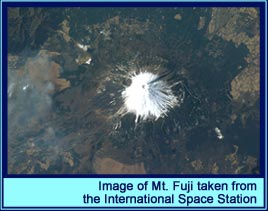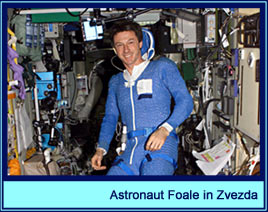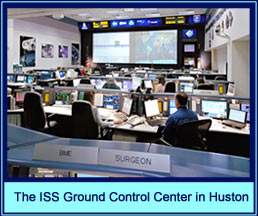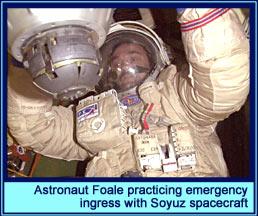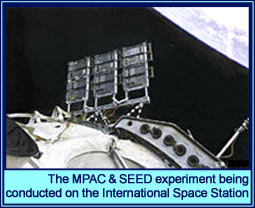 Q. What would you list as the most interesting experiment for yourself? Q. What would you list as the most interesting experiment for yourself?
Personally, the most interesting experiment was the EarthKAM (Earth Knowledge Acquired by Middle Students) experiment. The EarthKAM is a camera operated by students all over the world that I set up to look through the window of the laboratory module, Destiny, at the Earth. I set it up, I focus it, I put the lens on it, and I connect the camera, which is digital, to the lab's equipment, which downlinks the pictures to Earth.
Students all over the planet, from over 50 schools in Europe, Asia and North America, went to the Web site and signed up as to what place, latitude and longitude, they wanted to have a picture taken of. It was always fascinating, eating my lunch or whatever, to hear the click, click, click of the camera. Then I would go to the window, and say, what are they taking pictures of? Sometimes I would see they were only taking pictures of the sea, and I would think, "Oh, what a shame, that's a mistake." And it would be because they had taken picture just ten seconds too early. Other times over land, there would be too much cloud. But other times, they would take pictures over Japan and I would think, "Aha, I know who's taking this picture."
This was an interesting experiment for me because it showed the interest of other people in our planet, what they care about, and what their interests are.
Also, this is not an experiment, but we experienced something very unique. While we were preparing for our two-person EVA [Extra-Vehicular Activity], we had isolated each module of the space station, and we found a leak from the window in the American lab module, Destiny. This raised enough questions about whether or not there were any other air leaks, that they wanted to close off the space station. So when we closed off all the other modules, it forced us to live together in one small, small place in the service module, Zvezda. The only other place we could go to was our Soyuz, which has even less space than either Sasha or I had when we were living on Mir. We lived in those conditions for just two days, but it was more like being in the situation you would be in going to the Moon or to Mars, on a long, long journey. This was interesting, just to see what it was like to live in a smaller place.
 Q. Since a two-man crew system on the ISS has been introduced, it was the first EVA ever leaving the ISS unmanned. Did you have any concerns? Q. Since a two-man crew system on the ISS has been introduced, it was the first EVA ever leaving the ISS unmanned. Did you have any concerns?
Nothing at all. My approach to the space station is that it is a very complicated machine but it is also well built. It has redundancy that allows many things to occur or to fail, and has second systems to fix them. These are all monitored by ground control in Houston and Moscow. So for the short time that we go outside the space station to do a space walk, I do not believe anything really bad can happen to the space station.
In fact, when we did the space walk, we had to shut down many of the life-support systems as if we were leaving the space station for a long time to return to Earth. The space station was "conserved," which is the word we use: shut down as if for a long period of time, when we went outside. We had left the space station in good condition so I was not worried that we could not get back inside.
Besides, we had prepared the U.S. module air lock, ready to accept us with everything cleared out, so that we could come into it if we could not get back into the Russian air lock. Also, we had practiced doing an emergency ingress: getting inside the Soyuz spacecraft from the Russian air lock if we could not get back into the space station. So I was not very worried at all, nor was Sasha. The staff on the ground was quite worried about it because they had never left the space station unmanned. So they did not have confidence they could do this, but I did. I had a lot of confidence.
 Q. What were your EVA missions? Q. What were your EVA missions?
We exchanged the containers for JAXA's MPAC & SEED (Micro-Particle Capturer and Space Environment Exposure Device). These experiments were initiated by Japan in 2001. The goal is to collect micro-particles such as space debris. Our job was to bring the samples inside, package them very, very carefully, and return them to Earth.
We also set up a radiation monitoring device for the European Space Agency (ESA).
|

